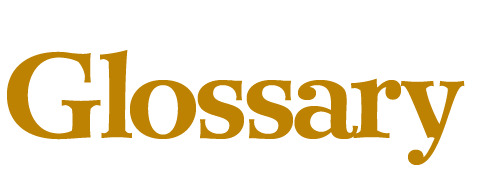home | homework | links | glossary | sitemap | contact

absolute URL | browser | Berners-Lee | <div> | content | CSS | Domain Name | <font> | FTP | homepage | HTML | index.html | Internet | link | meta tag | net neutrality | URL | W3C | WWW
absolute URL –
An absolute url specifies the exact location of a file/directory on the internet.
browser –
A browser is a software application used for retrieving, presenting, and traversing information resources on the world wide web. Microsoft's Internet Explorer and Mozilla's Firefox are examples of common web browsers.
Berners-Lee, Tim –
“…a simple system with simple rules that would be acceptable to all….” This was the vision of English born, Tim Berners-Lee, credited for inventing the world wide web and founder of the W3C. The creation was born in the 1980’s –following his graduation from Oxford and during his time at CERN— out a desire for a common area in which he could share information and data with other researchers. Built on the concept of linking documents together through hypertext, Berners-Lee wrote the Hypertext Transfer Protocol (or HTTP) in 1990 and designed a method for giving these documents locations on the internet known as a Universal Resource Identifier (URI) and more commonly known today as a URL or Universal Resource Locator.
“Greater openness, accountability and transparency in Government will give people greater choice and make it easier for individuals to get more directly involved in issues that matter to them.”[22]
To protect the open nature and accessibility of the internet, Tim Berners-Lee founded the World Wide Web Consortium, or W3C in order to “ 'lead the Web to its full potential,' primarily by developing common protocols to enhance the interoperability and evolution of the Web.” (Berners-Lee, 94).
Berners-Lee has been recognized throughout the years for his ongoing work and continues to be an inspiration through his talks and interaction with TED, his ongoing efforts with the W3C, and net neutrality.
content –
Content is the compilation of text, images and media found within a website.
CSS –
Cascading Style Sheets, or CSS, is the language used to describe the look of a document written in a markup language - most commonly an html document. CSS is used to define the presentation of a document whereas HTML is used to define the structure of the document.
<div> –
A div is a container that holds a section of a page that can be styled separately from the rest of the page. Positioning divs on a page is how you create a layout. Divs, or divisions, can be styled in context with each other as block elements providing the ability to create multiple columns on a page.
Domain Name –
A domain name is an identification label that defines a resource such as a website. For example lorettauriarte.com is the domain name within the universal resource locator; http://www.lorettauriarte.com
<font> –
Although deprecated, the font tag is still supported by most major web browsers. It is an html element for styling the font face, size and color.
FTP –
FTP, or file transfer protocol, is a standard network protocol used to copy a file from one host to another over a TCP-based network such as the internet. For example ftp.tripod.com is the file transfer protocol used to copy files from my local drive to the server on tripod.
homepage –
A homepage is the main, or initial page, of a web site and is the first page loaded when a user goes to a specific url. See index.html
HTML –
Hypertext Markup Language is the most common language used to define the structure of web page.
index.html –
"index.html" is the html definition of a home page. See home page.
Internet –
The internet is a global system of interconnected computer networks that use the standard Internet Protocol Suite (TCP/IP) to serve billions of users.
link –
or hyperlink, is a reference to a document that the reader can directly follow, or that is followed automatically.
meta tag –
Meta tag is an element that is used to specify a page description, keywords and any other metadata not provided through the other head elements and attributes.
Net Neutrality –
Network neutrality (also net neutrality, Internet neutrality) is a principle proposed for users' access to networks participating in the Internet. The principle advocates no restrictions by Internet service providers and governments on content, sites, platforms, the kinds of equipment that may be attached, and the modes of communication.
URL –
Universal Resource Locator, or URL, is the address of a web site and specifies where an identified resource is available and the mechanism for retrieving it.
W3C –
World wide web consortium, founded by internet pioneer, Tim Berners-Lee, is an international community that develops standards to ensure the long-term growth of the web.
WWW –
World wide web, or www is a system of interlinked hypertext documents accessed via the internet.